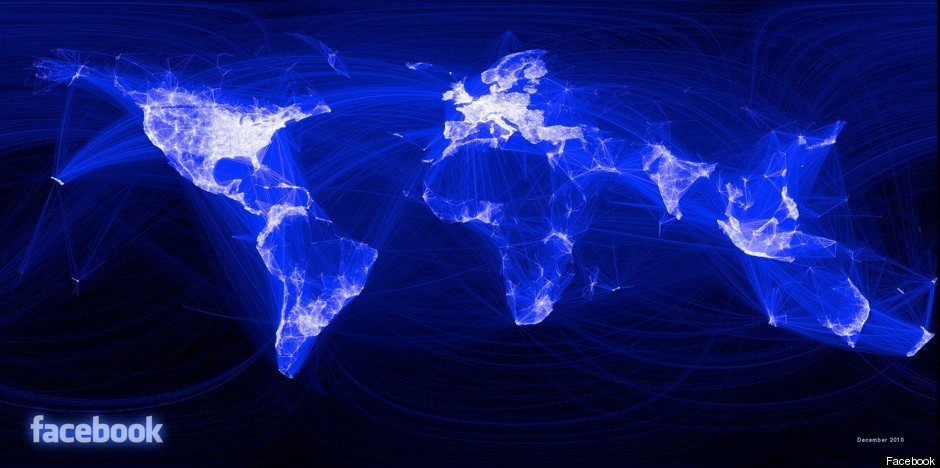Earlier this year I was honoured to scrape into Bob Little’s Asia-Pacific’s list of e-learning movers and shakers.
This list “is compiled on the basis of a person’s perceived current influence on the e-learning industry – as a practitioner, commentator, facilitator and/or thought leader.”
To the cynics out there who claim this is a PR stunt: I say you’re right. This kind of exercise is obviously geared towards lifting the profile of protagonists in the region.
And of course, the omission of certain names has caused a few ripples. For example, Bob was contacted by people in Australia and New Zealand, while a fellow in Malaysia who wasn’t nominated by his peers vented his frustration on Twitter.
All this got me thinking, what is the nature of influence? This isn’t a novel question, but it’s one that hasn’t been answered satisfactorily IMHO.
To me, the term influence refers to someone’s ability to change someone else’s behaviour. If you are “influential”, you prompt someone with whom you have had some form of contact not only to think about things differently, but also to do things differently and – hopefully – achieve a better outcome.
The emergence of digital influence
In today’s world of the interwebs, one of the primary vehicles of influence is social media – hence the adjective digital. Platforms that spring to mind include WordPress, Twitter, YouTube and LinkedIn.
I find digital influence intriguing because of its scalability. For example, an expert from Shanghai could influence many thousands of practitioners in China, but is he or she influential in the Asia-Pacific region? Or is the spirit of lists like Bob’s meant to highlight people who are influential across the region? Social media can facilitate that.
In a similar vein, you can exert influence by speaking at conferences, consulting clients, teaching students, and publishing research; but unless you use social media as a lever, I expect you will struggle to sustain influence on a continental scale.

The subjective measurement of digital influence
The next obvious question, then, is how to measure digital influence? Another old chestnut, and again one that hasn’t been answered satisfactorily IMHO.
To me, digital influence can be measured either subjectively or objectively. Bob’s perceptive measure is an example of the former: the respondents were literally asked who influences their work. It is beautiful in its simplicity.
However, I can see that a subjective measure has weaknesses. For example, an individual respondent might be prejudiced, or parochial, or insular, or driven by a personal crusade. There wouldn’t be too many of these types among educated professionals… right?
The good news is such weaknesses can be mitigated by the design of the survey. If it reaches a sufficient cross-section of respondents across the region and its answers are replicated, the weight of numbers should win out in the end.
Furthermore, I consider the breadth of the respondent pool to be infinitely more important than its depth. Even if the number of respondents is relatively small, the fact that a particular name has not made the list while others have speaks volumes!
The objective measurement of digital influence
Some readers will scoff at my line of reasoning and will instead promote the use of objective metrics to measure influence. Numbers never lie… right?

Klout calls itself “the standard for influence”. According to their website:
Klout measures influence online using data from your social networks. Anywhere you have an online presence, you have the opportunity to influence people by creating or sharing content that inspires actions such as likes, retweets, comments and more. The more engagement your posts receive, the more influential you are. Klout uses this information to provide you a Klout Score that measures your overall influence.
Sounds reasonable, but when Klout changed its algorithm last year, it was discredited by an avalanche of commentators – all of whom, I suspect, had experienced a reduction in their Klout Score.
Nonetheless, 90% of Bob’s e-learning movers and shakers have a Klout Score of 40 or more.

So how about the number of Twitter followers? This seems like a no-brainer, but have you seen the no-brainers who top the Twitter follower rankings?
Even if we restrict our criteria to e-learning professionals, does the number of followers really reflect someone’s influence? They might be entertaining or even thought provoking, but if they rarely change anyone’s behaviour, they could hardly be considered influential.
Then of course you have people with massive Twitter followings who aren’t quite in “e-learning”. I’m thinking of fellow Aussies like Ross Dawson, Jeff Bullas, Laurel Papworth and Darren Rowse. Surely they influence e-learning practitioners, but would any metric say so?
Indeed we see cross-pollination among Bob’s e-learning movers and shakers: 60% work in corporate e-learning, 20% in higher education, 10% in K-12, and 10% in telecommunications. All of them have a Twitter account, and 80% attract a following of over 1000.

OK, how about the number of blog visitors, blog comments or RSS subscribers? This is starting to make more sense, but again I have concerns – particularly around the nature of the content.
For example, can a blogger who typically posts links to other people’s work be considered influential? Maybe, indirectly. Like a news reporter, they are awareness agents.
To me, though, the true influencer occupies the top of the food chain. He or she is the one who generates the original thought and contributes it to the world.
Among Bob’s e-learning movers and shakers, 90% write a blog. Each one of them produces their own content.
The 3 determinants of digital influence
So, if your aim is to influence e-learning on a continental scale, how do you go about it?
In light of my ruminations, I propose the following three determinants:
- Intend to change other people’s behaviour.
- Leverage social media to expand your sphere of influence.
- Produce original content.
As for measuring digital influence, objectivity is a false idol. While particular metrics may characterise influencers, they are by no means indicative and their role in comparative analysis is questionable.
It seems like such a redundant pursuit, when you could just ask your target audience one simple question: Who influences you?
Heaven forbid.





